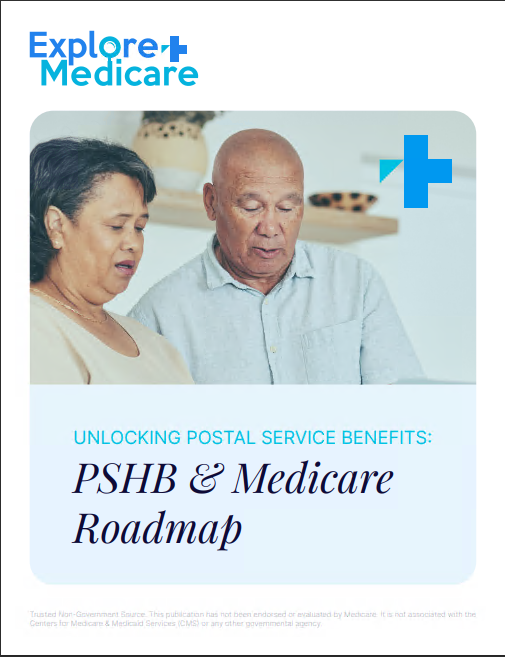Key Takeaways
-
In 2025, a $2,000 annual out-of-pocket cap on Medicare Part D prescription drug costs changes how you plan and budget for medications.
-
The new Medicare Prescription Payment Plan gives you the option to spread your drug costs across the year, instead of paying large sums at once.
Why 2025 Is a Turning Point for Medicare Part D
For years, Medicare Part D beneficiaries have faced unpredictable and often high prescription drug costs—especially for specialty or brand-name medications. That changes significantly in 2025. With new reforms now in effect, you have greater predictability and potentially lower out-of-pocket costs.
Whether you’re currently enrolled in a Part D plan or considering coverage, understanding these changes is critical to managing your healthcare expenses.
The New $2,000 Out-of-Pocket Cap
Starting in 2025, Medicare Part D introduces a $2,000 cap on your out-of-pocket costs for covered prescription drugs. This cap includes expenses such as:
-
Annual deductible (up to $590 in 2025)
-
Coinsurance
-
Copayments
Once your total spending reaches $2,000 in a calendar year, your plan will cover 100% of your covered prescription drug costs for the rest of the year.
What This Means for You
This cap eliminates the risk of facing unlimited expenses, especially in the catastrophic phase of Part D that previously had no maximum. You no longer need to worry about crossing multiple phases of coverage, such as the initial coverage limit or the now-removed coverage gap (donut hole). It brings more transparency and control to your drug spending.
Goodbye, Donut Hole
Prior to 2025, Part D had a coverage gap known as the “donut hole,” during which you paid a higher share of drug costs. That coverage gap is now gone. Part D in 2025 has only three phases:
-
Deductible phase: You pay 100% of drug costs up to your plan’s deductible (no more than $590).
-
Initial coverage phase: Your plan shares the cost with you until your total out-of-pocket spending hits $2,000.
-
Catastrophic phase: After reaching the cap, you pay nothing for covered drugs.
This simplification helps you understand exactly where you stand financially during the year.
Medicare Prescription Payment Plan Option
If you’ve ever struggled with the timing of high prescription costs—especially early in the year—you’re not alone. In 2025, the new Medicare Prescription Payment Plan offers a solution.
How It Works
You can opt in to this program through your Part D plan. It lets you spread out your out-of-pocket costs over 12 months, rather than paying large amounts up front. Here’s what you need to know:
-
Enrollment opens at the start of the plan year or when you first become eligible.
-
Payments are made monthly, like a utility bill.
-
You won’t be charged interest or penalties for using the program.
This is particularly helpful if you take high-cost medications and reach the $2,000 cap quickly.
Who Benefits the Most From These Changes?
While the new protections apply to all Part D enrollees, they offer the most relief to people who:
-
Take multiple brand-name or specialty drugs
-
Have previously reached the catastrophic coverage phase
-
Are on a fixed income and struggle with cost variability
Even if your drug costs are currently low, the new rules offer peace of mind. You won’t face unexpected spikes if your medication needs increase.
What Remains the Same in 2025
Not everything is changing. Here are key components that still apply in 2025:
-
You still must enroll in a Part D plan to get these benefits.
-
Monthly premiums vary depending on your plan.
-
Formularies (drug lists), pharmacy networks, and prior authorization rules are still plan-specific.
-
You may owe more if your income is higher, due to the Income-Related Monthly Adjustment Amount (IRMAA).
Reviewing Your Plan Remains Essential
Even with the $2,000 cap in place, it’s important to review your Part D coverage during the annual Open Enrollment Period (October 15 to December 7). Here’s why:
-
Plans differ in the drugs they cover and how they tier them.
-
Costs such as premiums and deductibles can change annually.
-
Your prescriptions may change during the year.
Always compare your current plan with others available in your area. What worked last year may not be your best option in 2025.
Part D Costs in 2025 at a Glance
Here’s a quick breakdown of the general structure for 2025:
-
Deductible: Up to $590
-
Out-of-pocket cap: $2,000
-
Premiums: Vary by plan and region
-
Coinsurance/Copayments: Based on your plan’s drug tiers
Note that these costs apply only to covered medications. Non-covered drugs and excluded medications do not count toward your out-of-pocket cap.
Late Enrollment Penalty Still Applies
If you don’t sign up for a Part D plan when you’re first eligible and you don’t have other creditable drug coverage, you’ll still face a permanent monthly penalty. This penalty is added to your premium for as long as you have Part D. The 2025 changes do not eliminate this rule.
If you’re new to Medicare this year, don’t delay your enrollment. The penalty adds up over time and cannot be waived without an approved exception.
Impact on Employer and Union Plans
Some employer or union retiree health plans coordinate with Medicare Part D. The 2025 changes may alter how these plans work with Medicare, including how they wrap around the $2,000 cap.
If you have retiree drug coverage through a former employer, review your plan materials and contact your benefits administrator to understand your coordination of benefits.
Coordination With Medicaid and Extra Help
If you qualify for Extra Help (Low-Income Subsidy) or have Medicaid, your drug costs may already be minimal. However, the new out-of-pocket cap could still affect how your costs are structured.
For example:
-
If you transition in or out of Medicaid coverage during the year, the $2,000 cap provides added protection.
-
If you lose Extra Help eligibility, the cap prevents an unexpected cost explosion.
Always report income or status changes promptly to maintain accurate coverage.
Planning Tips for 2025 and Beyond
Use these strategies to get the most from your Part D coverage under the new rules:
-
Create a medication list: Include drug names, dosages, and current costs.
-
Use Medicare’s Plan Finder during Open Enrollment to compare plans.
-
Set up calendar reminders for enrollment windows and benefit changes.
-
Opt into the Payment Plan if your drug costs are front-loaded early in the year.
-
Consult a licensed agent listed on the website for help evaluating your plan choices.
What These Changes Mean for Your Long-Term Health Budget
Prescription drug spending is a major concern for many people on Medicare. The 2025 changes offer predictability and protection. Over time, this can lead to better financial planning and less stress about medication access.
Even though the initial deductible and premiums still apply, knowing you won’t spend more than $2,000 annually gives you a solid foundation to manage your other health expenses.
Looking Ahead: Stability, But Still Work to Do
While the $2,000 cap is a significant win for beneficiaries, there are still challenges in the Medicare Part D system. Issues like prior authorization, plan complexity, and drug price negotiations remain under discussion.
Still, this year’s updates mark one of the most impactful changes in Medicare drug coverage in over a decade.
If you’re unsure how these updates apply to you, or you’re considering changing your plan, get in touch with a licensed agent listed on this website for professional advice tailored to your situation.









